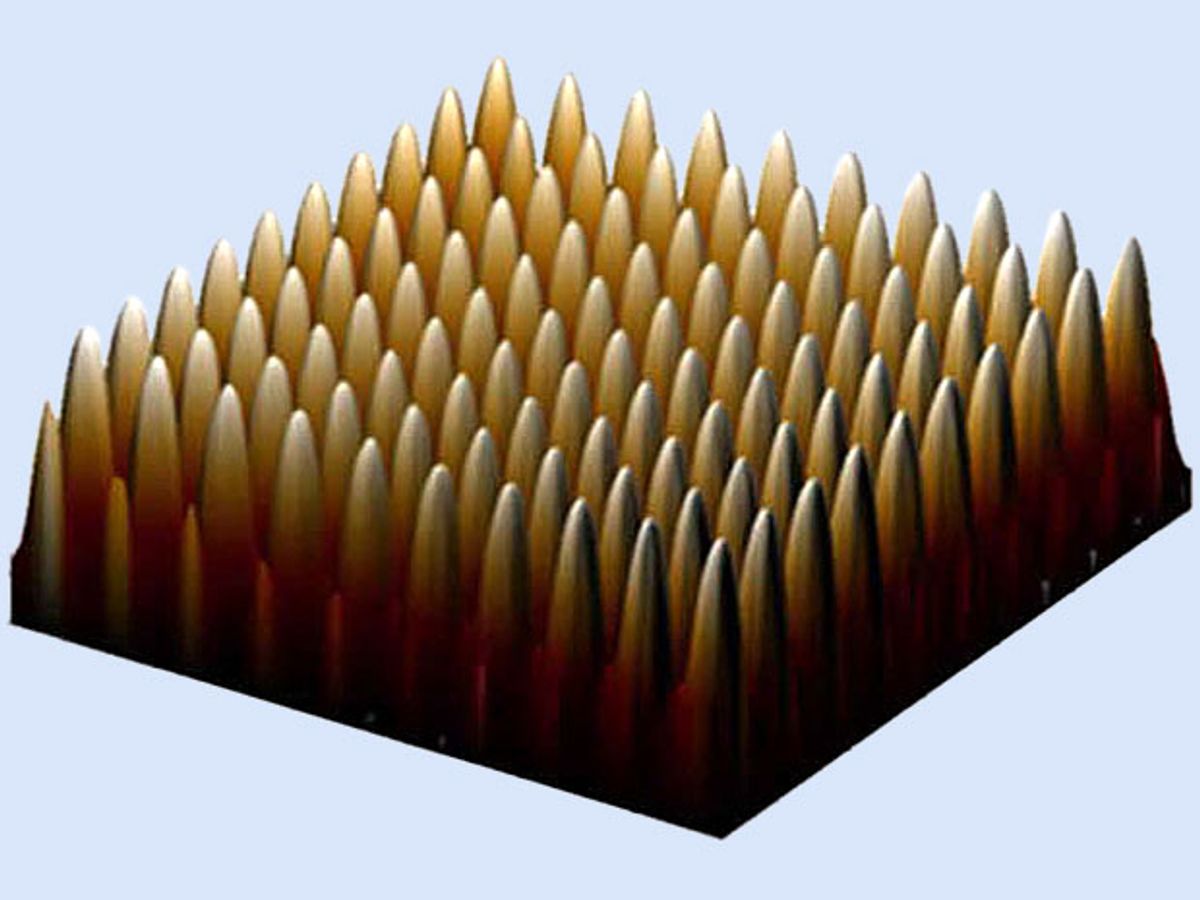Researchers at the Royal Melbourne Institute of Technology (RMIT University) in Australia have created an entirely new nanostructure they have dubbed a “nanocone”. It combines the upside-down physics of topological insulators with the easier-to-explain process of plasmonics. The result is a nanomaterial that can be used with silicon-based photovoltaics to increase their light absorption properties.
Topological insulators have the peculiar property of behaving as insulators on the inside but conductors on the outside and plasmonics exploits the oscillations in the density of electrons that are generated when photons hit a metal surface. What the RMIT researchers have done by bringing these worlds together is create a plasmonic nanostructure that has a core-shell structure that lends itself to being topological insulator.
“This is the first time that a nanocone with intrinsically core-shell structure has been fabricated,” said Min Gu, the RMIT professor who led the research in an e-mail interview with IEEE Spectrum. “The nanocone has a topologically protected metallic shell and a dielectric [insulating] core. They do not need a particular fabrication method and the unique nanostructure has the intrinsic properties of topological insulators.”
The topological insulator nanocone arrays could enhance the light absorption of solar cells by focusing incident sunlight into the silicon, according to Gu.
In research described in the journal Science Advances, this enhanced light absorption is achieved by the insulating core of the cone providing an ultrahigh refractive index in the near-infrared frequency range. Meanwhile, the metallic shell provides a strong plasmonic response and strong backward light scattering in the visible frequency range.
The researchers predict that then when a nanocone array is integrated into a silicon thin-film solar cell, it can help enhance light absorption for the cell up to 15 percent in the ultraviolet and visible ranges.
“With the enhanced light absorption, both the short circuit current and photoelectric conversion efficiency could be enhanced,” said Gu.
In future research, Gu and his colleagues plan to investigate plasmonics in other types of topological insulator nanostructures, such as nano-spheres and nano-cylinders and try to achieve plasmonic nanostructures that respond to a broad spectrum of light: from ultraviolet down to THz in all in a single core-shell nanostructure. He added: “In particular, we want to apply these nanostructures into ultra-thin PV devices.”
Dexter Johnson is a contributing editor at IEEE Spectrum, with a focus on nanotechnology.



